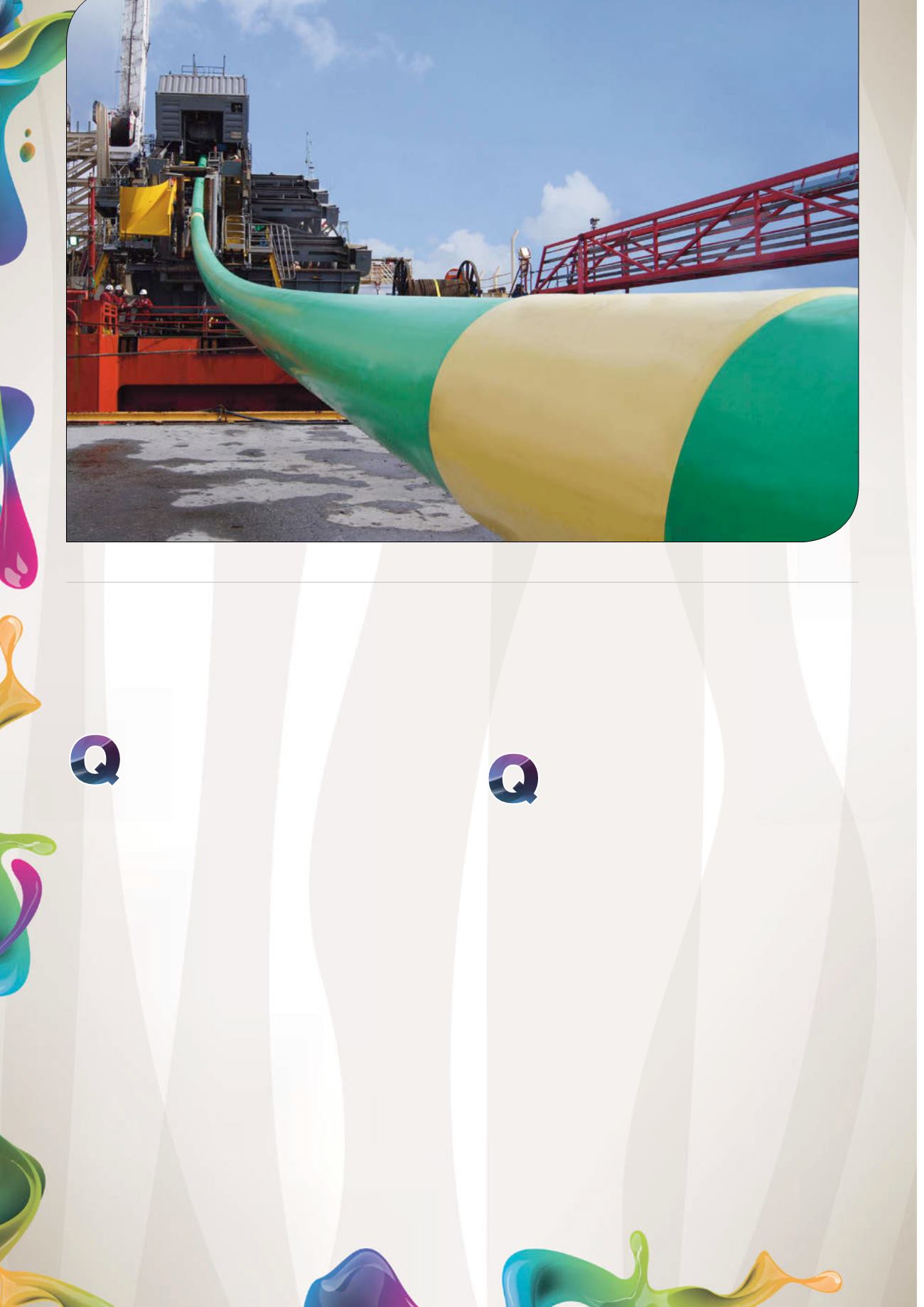
COATINGS
pipe storage will help to resolve the issue, preventing
the premature coating failures before the installation and
operation of the pipeline.
Mike Pierce, Bredero Shaw,
Business Development, US Offshore
How important is surface
preparation?
Old and existing pipelines are usually made of low
carbon mild steel, and everyone would agree that surface
preparation is important for the pipeline coating performance.
The pipeline industry now uses different types of steel,
such as high strength steel (X80 and up to X120), duplex
and stainless steel pipes, and corrosion-resistant alloy (CRA)
(mechanically or metallurgical lined) clad pipes. Unfortunately,
these special types of steel tend to behave quite differently
during the surface preparation and coating application
process, compared with their regular low carbon mild steel
grades. For example, grit blasting different types of steel
results in different anchor patterns. The anchor pattern can
significantly affect the performance properties of the finished
coating. Another factor is their temperature behaviour during
the pipe preheating process prior to coating application. For
example, a submerged arc welded (SAW) duplex steel pipe
can have different ferritic-austenitic structures and ferrite
contents in the weld seam and on the pipe body. These do
not respond uniformly to the electromagnetic induction
preheating prior to the coating application. As a result, the
surface temperatures on the pipe body and along/near the
weld-seam area could be significantly different with a change
in temperature of up to 40 ˚C. The large difference in surface
temperatures and less predictable heat profile/pattern
along these pipes can have an impact on the performance
properties (such as CD and hot water soak) of an FBE based
coating on different sections of the same pipe.
Dr. Shiwei William Guan, Vice President of Strategic
Markets and Technology, Bredero Shaw, Asia Pacific
What advances in coatings materials
and application will prove to be
most successful in the next few
decades?
Global forecasts show a fast growing energy demand over the
next two decades, which will be met by tapping increasingly
challenging and remote field developments. This will have a
dramatic impact on performance requirements from future
pipeline coating solutions. First, installation conditions will
become increasingly challenging (offshore lay in Arctic,
onshore installation in permafrost, or remote rocky areas)
and resulting high flexural requirements will be only met
by engineered or functionalised coating system leveraging
recent advances in molecular engineering, such as SureBond™.
In addition, production fluids composition is steadily
becoming more corrosive, requiring strong understanding
of future coating system chemical stability, diffusivity and
overall impact on long-term anti-corrosion performance.
Furthermore, recent democratisation of surface engineering
technologies will allow for previously unavailable flow
enhancement solutions, as well as optimal steel substrate for
future anti-corrosion coating systems. Increasingly affordable
sensing technology will allow for real time anti-corrosion
performance and coating integrity monitoring though smart
Figure 2.
Goliat Project, Barents Sea – one of Bredero Shaw’s successful projects coated with Thermotite
®
ULTRA
™
, a novel thermal
insulation coating for deep subsea pipelines.
58
SEPTEMBER
2014


